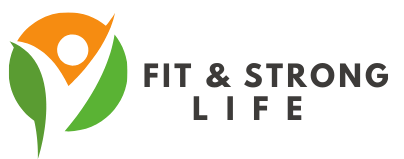Table of Contents
- Myth 1: Lifting Weights Makes You Bulky
- Myth 2: Cardio Is the Only Way to Lose Weight
- Myth 3: You Can Spot Reduce Fat
- Myth 4: You Should Avoid Carbs
- Myth 5: More Sweat Equals More Fat Loss
- Myth 6: You Need to Work Out Daily
- Myth 7: Supplements Are Necessary for Results
- Myth 8: All Gym Equipment Is the Same
- Myth 9: Once You Reach Your Goal, You Can Stop Working Out
- Myth 10: You Need to Be Young to Get Fit
Myth 1: Lifting Weights Makes You Bulky
Many men fear that lifting weights will lead to a bulky physique, which is often associated with bodybuilders. However, this myth is far from the truth. Building muscle mass requires a specific diet and workout regimen, usually involving heavier weights and fewer repetitions. The average gym-goer who lifts weights will find that they develop a lean and toned body rather than an oversized one.
FAQ:
Q: How do I avoid getting too bulky?
A: Focus on higher repetitions with moderate weights. Aim for around 12-15 reps per set rather than heavy lifting.
For more insights, check out this article on protein sources.
Myth 2: Cardio Is the Only Way to Lose Weight
While cardio workouts are effective for burning calories, they are not the only method to shed pounds. Strength training can also help you lose weight by increasing your metabolic rate, allowing you to burn more calories even at rest. Incorporating both cardio and strength training into your routine can yield the best results.
FAQ:
Q: How much cardio should I do?
A: Aim for at least 150 minutes of moderate aerobic activity or 75 minutes of vigorous activity each week, in addition to strength training.
Learn more about balancing cardio with strength training here.
Myth 3: You Can Spot Reduce Fat
A common misconception is that you can target fat loss in specific areas of your body, such as the belly or arms, through targeted exercises. In reality, fat loss occurs uniformly across the body. A combination of a healthy diet and full-body workouts is essential for effective fat loss.
FAQ:
Q: What exercises should I do for overall fat loss?
A: Incorporate compound movements like squats, deadlifts, and bench presses along with cardio exercises.
For more details on effective fat loss strategies, check out this comprehensive guide on hydration.
Myth 4: You Should Avoid Carbs
Carbohydrates have been demonized in the fitness world, but they are essential for energy, especially for those who engage in intense workouts. It’s not about eliminating carbs but choosing the right kinds—focus on whole grains, fruits, and vegetables rather than processed sugars.
FAQ:
Q: How many carbs should I eat?
A: A balanced diet should include approximately 45-65% of your daily calories from carbohydrates, depending on your activity level.
For a deeper understanding of carbs and their role in fitness, visit this nutrition guide.
Myth 5: More Sweat Equals More Fat Loss
Sweating is often misconstrued as an indicator of fat loss. In reality, sweat is your body’s way of regulating temperature and does not directly correlate to calories burned. Factors like humidity and exercise intensity can affect how much you sweat, but fat loss is achieved through a caloric deficit.
FAQ:
Q: How can I measure fat loss effectively?
A: Track your progress through body measurements, photographs, or body fat percentage rather than relying solely on weight scales.
For more on understanding body composition, check out this article.
Myth 6: You Need to Work Out Daily
Rest is just as vital to your fitness journey as the workouts themselves. Overtraining can lead to burnout and injuries, so it’s crucial to incorporate rest days into your routine. Aim for at least one to two rest days per week to allow your muscles to recover.
FAQ:
Q: What should I do on rest days?
A: Engage in light activity like walking or yoga to keep your body moving without intense strain.
Learn more about rest and recovery here.
Myth 7: Supplements Are Necessary for Results
The fitness industry often promotes the idea that you need supplements to achieve your goals. While some supplements can be beneficial, they are not necessary for everyone. A well-balanced diet rich in whole foods can provide all the nutrients your body needs.
FAQ:
Q: Which supplements are the most effective?
A: If you’re considering supplements, focus on protein powders, creatine, and omega-3 fatty acids, but consult a healthcare provider first.
Get a detailed overview of essential supplements here.
Myth 8: All Gym Equipment Is the Same
Not all gym equipment is created equal. Different machines and weights serve different purposes, and knowing how to use them effectively can significantly impact your workout results. Free weights, for example, engage stabilizing muscles that machines often do not.
FAQ:
Q: Which equipment should I prioritize?
A: Start with free weights, resistance bands, and bodyweight exercises to build a solid foundation.
Check out this guide on essential strength training equipment for more insights.
Myth 9: Once You Reach Your Goal, You Can Stop Working Out
Many believe that achieving fitness goals means they can stop working out altogether. In reality, maintaining your fitness level requires ongoing commitment. Establishing a sustainable routine is essential for long-term health and well-being.
FAQ:
Q: How can I stay motivated after reaching my goals?
A: Set new, achievable goals and vary your routine to keep things interesting.
For tips on staying motivated, refer to this article on fitness motivation.
Myth 10: You Need to Be Young to Get Fit
Fitness is not just for the young. People of all ages can achieve their fitness goals and improve their health. It’s essential to tailor your workouts to your current fitness level and any physical limitations. With the right approach, anyone can get fit at any age.
FAQ:
Q: What types of exercises are best for older adults?
A: Focus on strength training, flexibility exercises, and low-impact cardio to promote balance and mobility.
For more age-appropriate fitness tips, check out this resource.
By dispelling these common fitness myths, you can approach your fitness journey with the right information and a positive mindset. Remember, fitness is a personal journey, and it’s essential to find what works best for you. Happy training!




